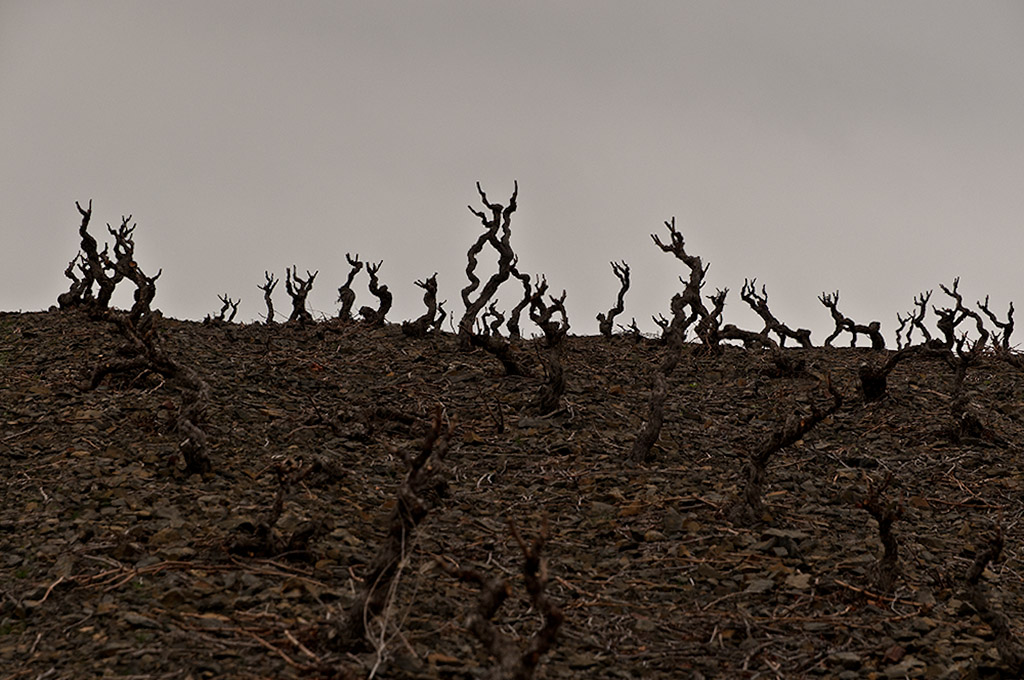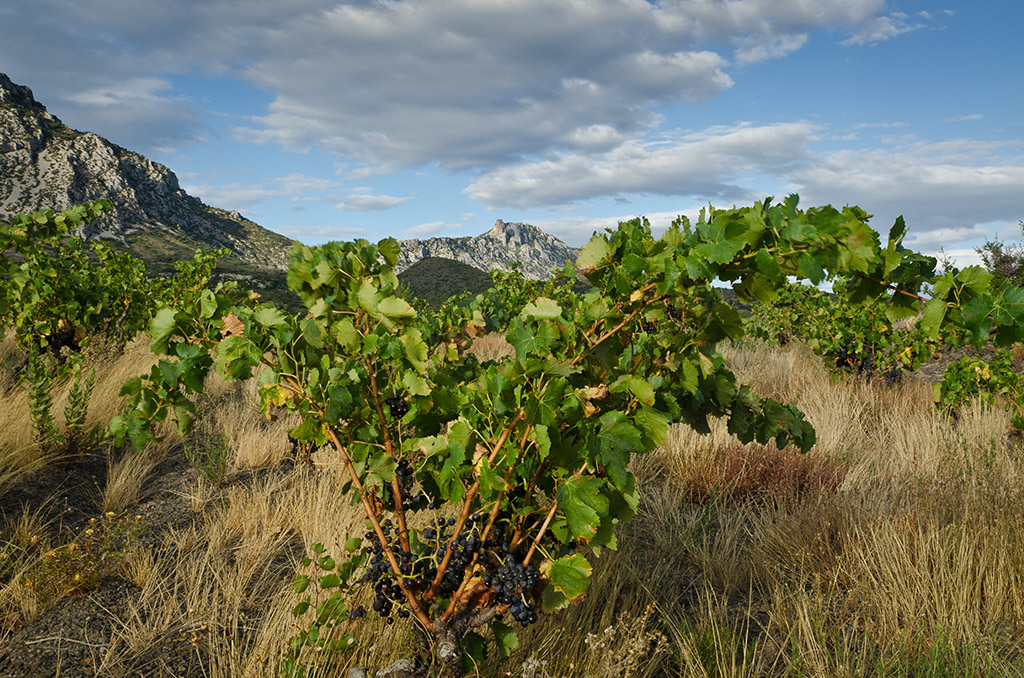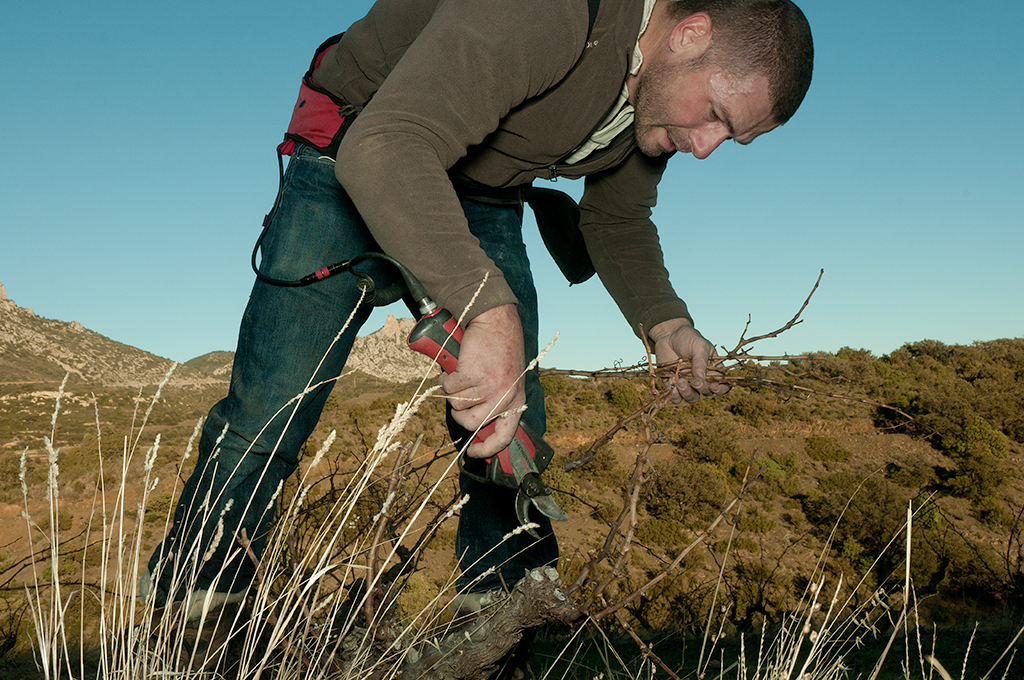New Years Day I reluctantly dragged myself from bed around noon and took a coffee up to the terrace to heal in the sun. Tout à coup, an Alfred Hitchcock movie broke out. The sun brought out more birds than I had ever seen. Run down for the camera, back up for the show. They’re starlings I believe. Peterson’s Field Guide to the Birds of Britain and Europe describes them as “jaunty, quarrelsome and garrulous.” (Serious understatement) The voice is a “harsh descending tcheer with a medley of clear whistles, clicks, rattles and chuckles, woven into a long, rambling song.” Now multiply that by about 100,000 and you have some idea of the sound and why some people went looking for their weapons. The noise was incredible, as they seemed to call (or tweet) all their friends to say the weather was nice here and there’s a good tree for resting. This became a flash mob, the numbers grew, the tree was overcrowded and the quarrels escalated. I couldn’t come close to an estimate, 100,000 is probably low, but for you Photoshop skeptics, this photo is real and only covers a small section of the flock.
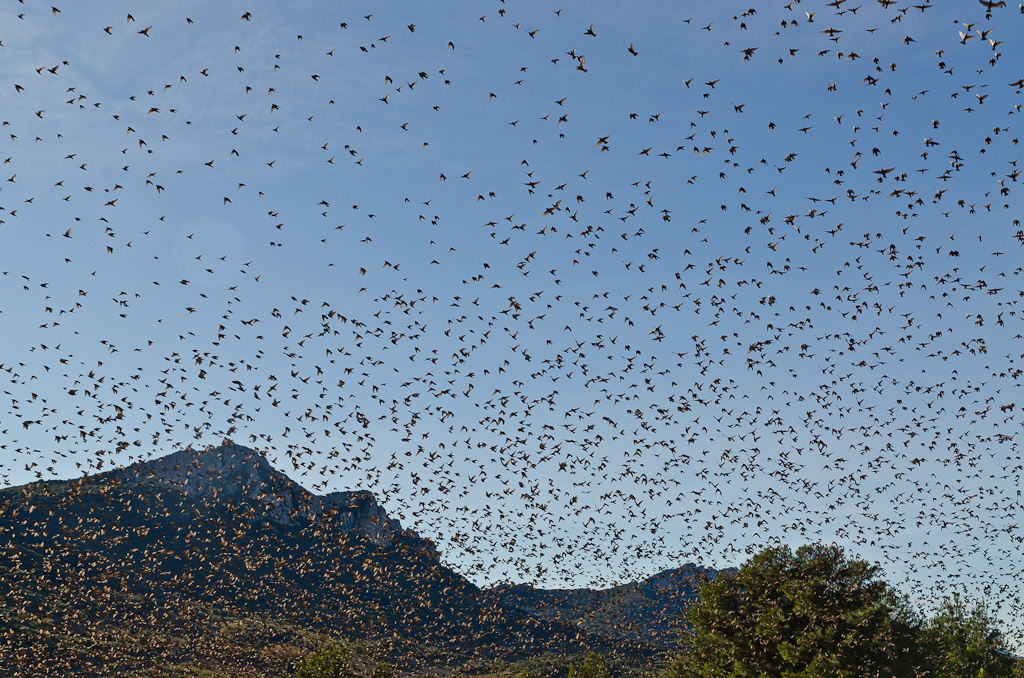
After about 30 minutes, someone had had enough and fired off a gun, which the birds took to mean that the weather may be nice but they weren’t too sure of the people. They stopped talking and took off, and I went down to wash my hair.
Spent the next morning applying for Social Security and needed a walk after lunch. There’s something powerfully restorative about a walk in the vineyards, even in winter when the old vines look dead as can be. They’re not, of course and we know winter will end, the vines will bud, sprout leaves, grow fruit and there will be more wine. It’s just a good idea to get out there and remember. And if you need a longer perspective, there are young vines too, new plantings just taking root.
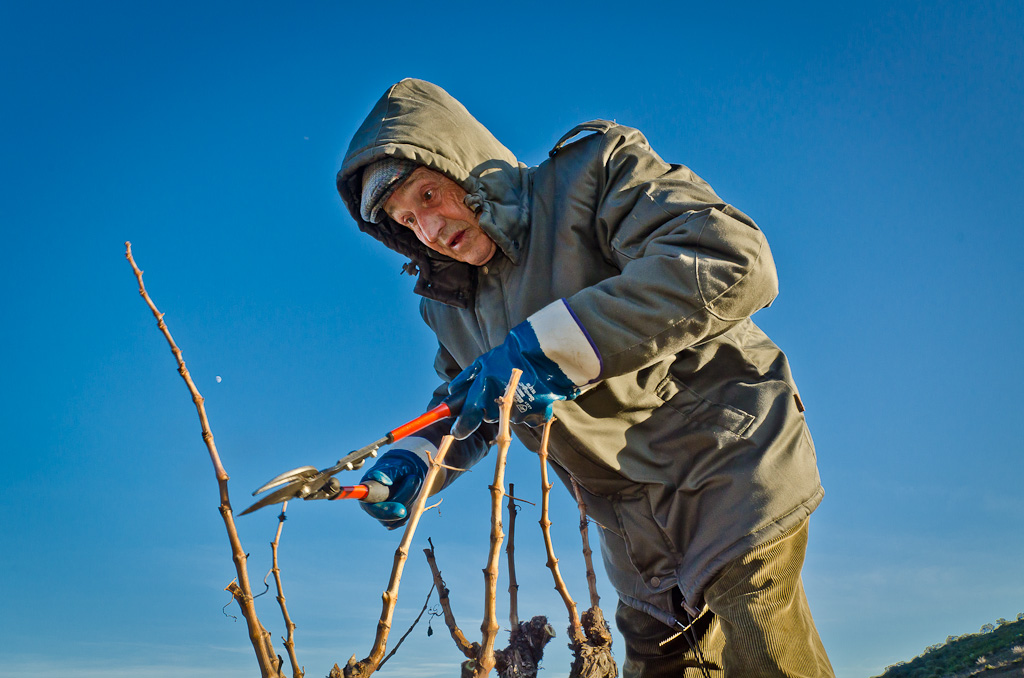
I met an 89-year-old man with few teeth and the heavy local accent, which left me understanding very little. Here’s what I learned: he was born here, lived here all his life, fought in the war of 1940, his father in the war of 1914, and he knows that war is never good. His back hurts some, but he can continue working the vines because he’s not tall like me. His arms are strong from working the vineyards all his life. It’s a lot of work but he likes being outside. He also likes Barack Obama and a pastis now and then.
He continues to work his vineyards and I don’t think there’s anyone to take over when he no longer can. If that’s the case, another winemaker will purchase the land, or the vines will be torn out by a successor not interested in making wine. The land isn’t really suited for crops other than wine or olives, neither of which is likely to make anyone rich any time soon. So what is best for the town: to let the land lie fallow, hope foreign investors want to purchase the vineyard, or seek subsidies to build housing for which there doesn’t appear to be a great demand? It’s a critical question for a town with an aging population and the answer isn’t easy. Mayor Chivilo sees the answer in a balance of new and old but getting there requires a sufficient number of local families continuing in the wine business. There are some, but at this time no one knows if there are enough. Change happens slowly here, but it does happen.

